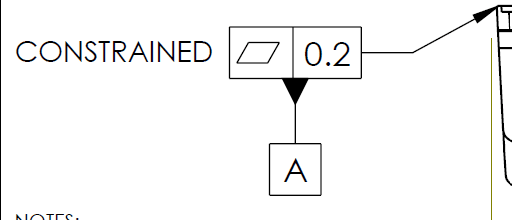ryanwolff90
Mechanical
A principal engineer at my company always adds the word 'CONSTRAINED' next to a flatness callout on plastic parts for the Datum A feature, as shown in the picture attached. When I asked him about it, he explained that this allows the vendor to apply some pressure to the part when measuring flatness. I keep insisting that this approach isn’t valid and we need to clearly specify how the part should be constrained, rather than leaving it up to the vendor. For example, we could state something like, 'Permissible to measure part while constrained to a flat surface plate on Datum A using screws through Datum B holes torqued to X in-lbs.'
One question I have, though, is: how do you actually measure the flatness of a feature if it’s constrained to a flat surface on that same feature? I found a post from 2020 discussing measuring flatness in both the free state and constrained state, but it didn’t address the method of measuring the part while it’s constrained.
Thank you!
One question I have, though, is: how do you actually measure the flatness of a feature if it’s constrained to a flat surface on that same feature? I found a post from 2020 discussing measuring flatness in both the free state and constrained state, but it didn’t address the method of measuring the part while it’s constrained.
Thank you!

